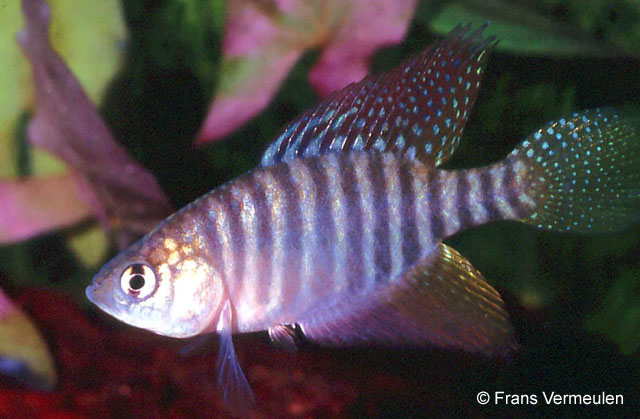| Rivulidae (Rivulines), subfamily: Cynolebiinae |
| 8 cm TL (male/unsexed) |
|
benthopelagic; freshwater, non-migratory |
| South America: São Francisco River basin, Brazil. |
|
Dorsal soft rays (total): 16-24; Anal soft rays: 19-24; Vertebrae: 28-30. Caudal peduncle of female with black spots. Male's anal fin with gray to black distal stripe, iridescent dots restricted to posterior portion of the fin, anterior part pink and posterior yellow; basihyal broad, 70-95% in length; and, second pharyngobranchial teeth, 5-10. Dorsal-fin rays 22-24 in male, 16-18 in female; anal-fin rays 23-24 in male, 19-21 in female; caudal-fin rays 24-26, caudal fin subtruncate in male, rounded in female. Possess minute pectoral-fin contact organs, and no black blotches and round brilliant spots on anterobasal part of dorsal fin of male (Ref. 49550). |
| Found in temporary pools (Ref. 89836). Bottom spawner, 3 months. Is difficult to maintain in aquarium (Ref. 27139). |
|
Endangered (EN); Date assessed: 18 May 2022 (B1ab(ii,iii)+2ab(ii,iii)) Ref. (130435)
|
| harmless |
Source and more info: www.fishbase.org. For personal, classroom, and other internal use only. Not for publication.

